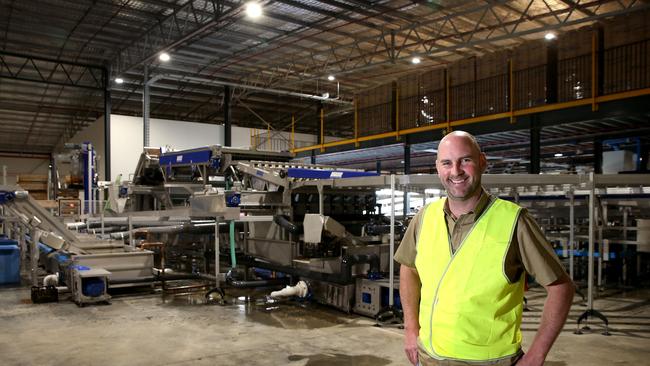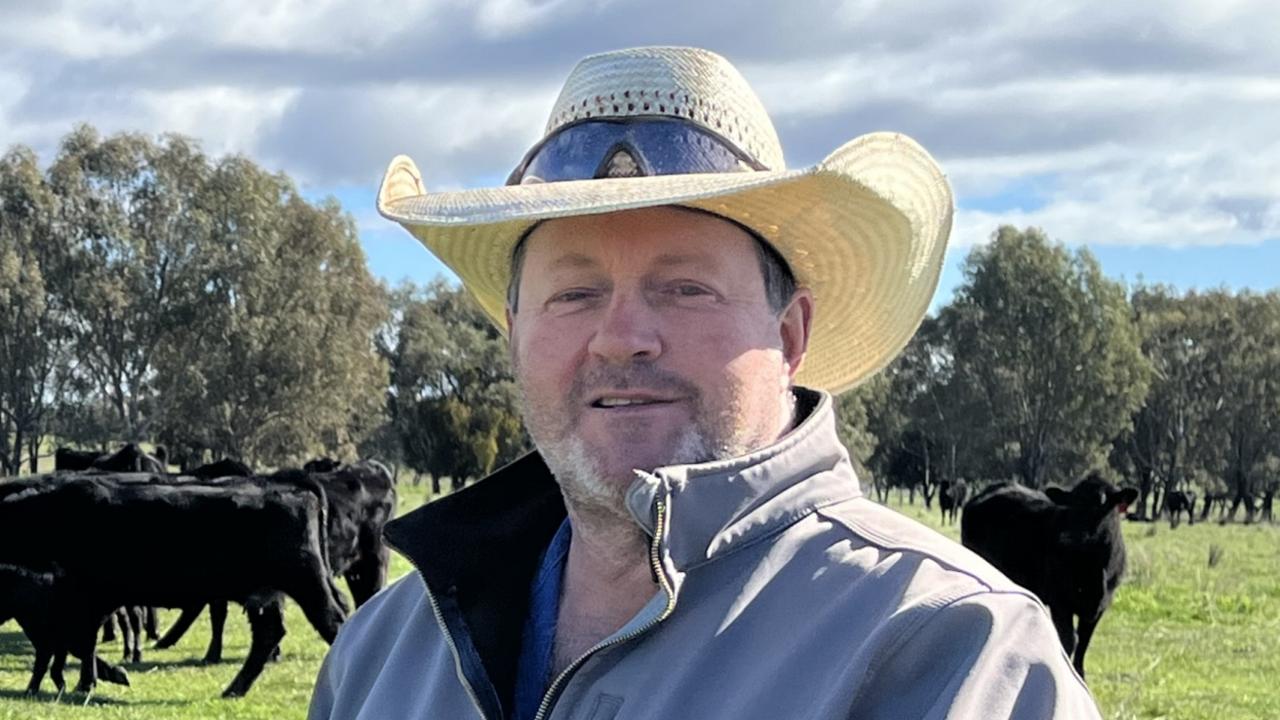Cherryhill Orchards: Innovation the salvation for Riseborough family business
MODERN technology has helped reshape this family farming business, writes JAMES WAGSTAFF.

IN the rolling green hills of Victoria’s fertile Yarra Valley, innovation is proving the salvation for one dynamic farming business.
From humble beginnings during World War II, when George Riseborough planted a handful of cherry trees on his farm at Wandin, Cherryhill Orchards has grown to become one of the nation’s biggest cherry producers.
But it’s not just in its seven orchards, spread strategically across five districts and two states, where the business is staking its claim.
Watching as rivers of cherries wend their way towards a sophisticated optical machine that photographs and assesses individual fruit, and then grades and packs it accordingly, George’s grandson, Stephen Riseborough, talks with passion about the technology that is powering Cherryhill well into the future.
“It’s really exciting stuff and has allowed us to do so much more,” said Stephen, referring to a new $10 million grading and packing shed at Coldstream complete with a Unitech grading machine, which arrived from Italy in August and was commissioned last month.
It represents a giant leap forward in production for the company which had outgrown its former processing shed at Wandin (where up until 1992 all fruit was graded and packed by hand).
“In previous seasons we were doing really long arduous days but we should be able do well over 100 tonnes a day pretty comfortably this year,” said Stephen, who runs the company with his brother Glenn.
“That sort of volume in the old machine was a real slog … it was hard on staff and quality wavered. We wanted to do it comfortably and be really in tune with the product that was coming out.”
RED ROAR
CHERRYHILL produces 2000 tonnes of cherries a year, most of which are sold through supermarket chains and wholesale markets. In light of recent trade negotiations the Riseboroughs see massive potential for the export of fresh cherries.
As well as Wandin and Coldstream, Cherryhill has an orchard at Cobram, in northern Victoria, two in the Strathbogie Ranges, one at Tolmie, near Mansfield, and a joint venture at Orange in NSW.
The differing climatic regions lengthen its growing season. For example, the 198ha orchard at Cobram, bought in 1992, grows early-season varieties and harvest runs from early November through to mid-December.
The 36ha Wandin home block produces mid-to-late season export quality cherries while the 60ha block at Tolmie, bought in 2004 and in a cooler climate about 1000m above sea level, produces cherries from late January until March. The more recent purchase of land at Coldstream gives the business “more scope” with Wandin “hemmed in by the trees”.
Stephen said cherry growing required relatively good soil (“you don’t have to have the world’s best”) good drainage, and access to an abundance of good, clean water.
“You don’t want frosts and you don’t want an area that is too wet,” he said.
Cherryhill grows about 15 core varieties of cherries, meaning that in each week of the season there is a new variety ready to be harvested.

In an effort to stay ahead of the pack the Riseboroughs scour the world for the best varieties and growing techniques. A cherry tree takes about four to five years to bear fruit and eight or nine years to full production. Stephen said Cherryhill had trees that were 30 years old “and still producing good fruit”.
Cherry season ramps up in spring when bees are brought in to help with pollination.
There’s plenty of work going on in the orchards.
Insects are monitored by traps throughout the trees, and are controlled when needed.
At Coldstream, water is sourced for irrigation from the Yarra River.
Cherries are hand-picked with their stems on to maximise shelf life. Sugar levels are measured using a refractometer.
Stephen said this year had produced a medium-volume crop. While Cherryhill produces about 2000 tonnes of fruit, “packouts” or wastage were “anyone’s guess” depending on weather events such as hailstorms. Some orchards have hail netting but “predominantly not”. The Yarra Valley orchards are particularly prone to bird damage.
PACK OUT
ONCE they are picked cherries are transported to Coldstream, where they are refrigerated overnight.
The packing process begins with cherries being submerged in a 17,000-litre tank, allowing them to separate. Stems of any doubles or clusters of fruit are then cut to make individual cherries, allowing them to be sorted by size.
Previously when cherries were joined a variation in sizes led to problems with sorting and quality.
Stephen said the production process was geared around the use of air and water, producing an “incredibly clean” product.
The cherries float in water through a 20-lane optical grader, with a computer taking 30 pictures of every cherry, separating premium and second-grade fruit into packing lanes according to size, colour, firmness and defects (machine parameters can be changed).
Cherries run under the cameras at a rate of 30 a second, a lane. As they pass under the cameras, the cherries are rotated from one side to another, creating a 3D image to be captured. Air jets then punch out a pocket of air to send the individual cherry to its desired grouping.
Workers visually assess the cherries. Samples of about 100 are taken to a separate area of the shed for a quality-checking process that Stephen said was “the fundamental guts of what we do as a business”.
Here fruit is double checked for rot, splits, insect or bird damage, scarring, rub marks, bruising, stem cracks, nose cracks, thrip damage or pitting.
The cherries then run over load cells that weigh and pack them accordingly. They are shipped each day to markets. Most go to Coles, Woolworths and Costco, where they are sold under the Cherryhill or store-branded produce, and Melbourne Wholesale Market. A small proportion goes to interstate wholesale markets.
The Wandin orchard is devoted to pick-your-own, and is open from mid-November until early January. Cherryhill offers online home deliveries through its website.
SHIP SHAPE
STEPHEN said prices were heavily linked to supply and demand. Exports make up about 15 per cent of sales but Stephen sees significant growth potential.
Last month the Federal Government said it had struck a deal to allow fresh cherries from Australia’s mainland to be airfreighted to China.
The move is considered a major win for the industry and means cherries from mainland Australia can potentially be on Chinese supermarket shelves with 48-72 hours of harvest.
While Australian cherries have had access to China since 2013, only Tasmanian cherries were able to be air freighted because of fruit-fly concerns.
Cherries from other states were fumigated while being shipped by sea, which took about 21 days.
“China is a gigantic market,” Stephen said.
“(But) it’s a case of taking it slowly and working with our customers to make it work.”
And with new trees coming into fruit, and technology in place, Cherryhill is in the box seat to capitalise on this growing global appetite.


